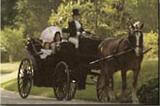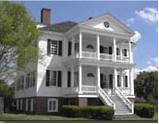Newcomers and visitors enjoy exploring sites of events that have taken place over the course of more than 250 years of Kershaw County history. Camden was founded in 1733 and is South Carolina's oldest inland city. Kershaw County derives its name from Joseph Kershaw, one of the first community leaders of Camden.
English and French settlers moved to this area from Charleston and joined Scotch and Irish groups who migrated from the Northeastern United States. The old Revolutionary War era grave markers at Quaker Cemetery testify to the cultural diversity of the early Camden years.


Two Revolutionary War battles took place near Camden. The Battle of Camden in 1780 was disastrous for the American troops under the command of General Horatio Gates. General Nathaniel Greene led the American side during the second conflict. The Battle of Hobkirk Hill was also a defeat for the colonists. However, the heavy casualties inflicted on Cornwallis caused him to evacuate Camden.


A lasting symbol of Camden was created in the 1820s- a life-size iron effigy of King Haigler, a Catawba Indian who befriended early settlers in the area. A replica of the original, which is housed the Camden Archives & Museum, stands atop the old opera house on Broad Street as a symbol of the community's hospitality. King Haigler is also memorialized by a new Post Office in Camden that bears his name.


Camden quickly recovered from the war and has easily moved progressively forward ever since. By 1885, Camden and Kershaw County became a popular winter community for wealthy Northern families. It was during this golden age of the resort hotels that people began to appreciate the inherent beauty, accessibility, and pleasant climate of the area, thereby contributing to the growth of our county to what it is today. Horse-related activities became very popular. That interest in equine activities has continued and today the horse industry is a major part of the county economy. For that reason, the county is known as the "Steeplechase Capital of the World".
The area stands poised today to continue that progress into the next millennium. Its beauty and cultural diversity will continue to attract new residents and visitors from all over the country. We stand ready to welcome you to our area.
